How Does a Diesel Engine Work? Pros, Cons, Types & FAQ
-
Pete Ortiz
- Last updated:
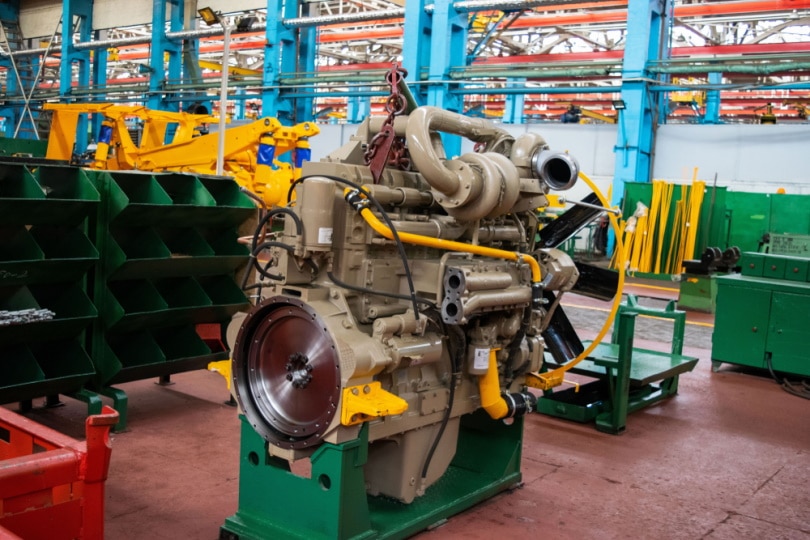
A diesel engine is similar to a standard gas engine. They are both combustion engines. But, where a gas engine uses sparks to ignite the petrol, a diesel engine relies on the high temperature that is achieved when the diesel is compressed in the pistons. A diesel engine also has additional particulate filters and other components to reduce the emissions produced.
Diesel engines are used in cars and are frequently used in other forms of transportation, including trucks. They are also used in agricultural equipment and as power generators.
Their biggest advantage is that they produce lower emissions, offer improved fuel economy, and the engines themselves last longer than gas engines. However, diesel is more expensive than gas per liter, and they can be noisier.
How Does It Work?
Gas engines use spark plugs to create a spark and ignite fuel in the engine, but diesel engines don’t use this method of ignition. Instead, they use compression. The diesel engine takes air and compresses it at a ratio of between 14:1 and 25:1. The compressed air is then hot enough that, when diesel is introduced to the air, it will automatically ignite. Once the diesel is ignited, it pushes the pistons in the engine, which provide drive, and the process repeats.
Because diesel engines only compress air, rather than gas engines that compress a mixture of air and gasoline, the air can be compressed to a much higher ratio which means higher temperatures to start the engine. However, in very cold conditions, compression alone may not raise the temperature high enough, so a glow plug, which is a small electrical coil, may be found in the chamber. This helps raise the temperature to a suitable level.
Because the air has a higher compression ratio, it also means that it has a higher expansion ratio, so the pistons can be moved further and faster. This is what gives diesel greater efficiency. And, with greater efficiency comes reduced emissions.
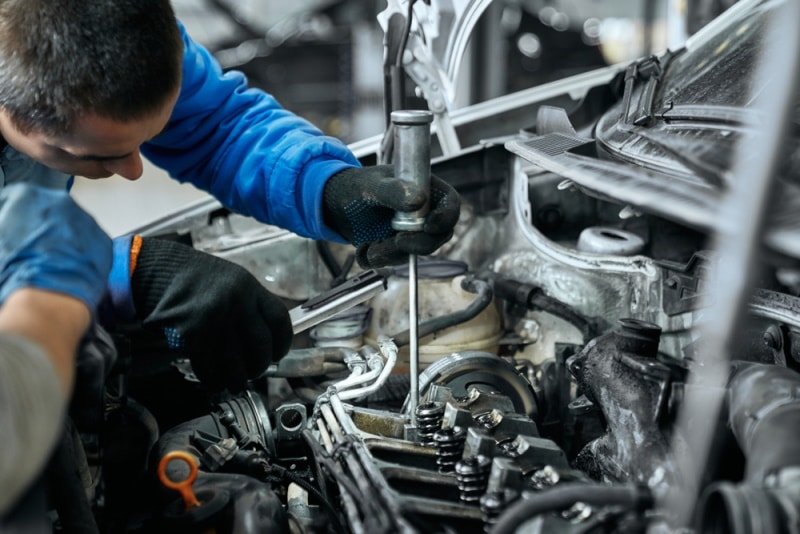
What Are the Different Types of Diesel Engines?
Diesel engines are used in everything from lawn mowers and hedge trimmers to massive trucks and even ferries and some aircraft. To achieve the desired power and efficiency for their application, there are different types of diesel engines that are used, but diesels can be broken down into two main categories:
- Two-Stroke – A stroke engine is the most basic type of diesel engine and goes through two strokes, or one complete revolution, per revolution. As the piston moves upwards, it compresses the air in the chamber above, while drawing new air in below the piston. As the piston moves down it pushes the compressed air into a combustion chamber while also exhausting gases. Two-stroke engines are inefficient, loud, and produce more emissions than four-stroke alternatives, and they are not legal for road use in most countries. They are, however, still used for some basic outdoor equipment and off-road bikes.
- Four-Stroke – Four-stroke engines complete two full revolutions to complete a full cycle. As the piston moves down, it draws air and fuel into the cylinder. The piston then moves back up and compresses the mixture and ignites. This causes the piston to fire down again, giving the engine power, and as the piston is pushed back up once again for its final stroke, it pushes exhaust gases out. The four-stroke engine is quieter and produces fewer emissions. It is the type of diesel configuration used in most cars and vehicles.
- Turbodiesel: Diesel engines have a reputation for having worse performance than gasoline engines. One method of overcoming this is with a turbo diesel engine. In a turbo diesel engine, a turbine rotates and pushes additional air into the cylinders, which forces more diesel to be burned and increases the power performance of the engine. This increases the efficiency of the combustion process.
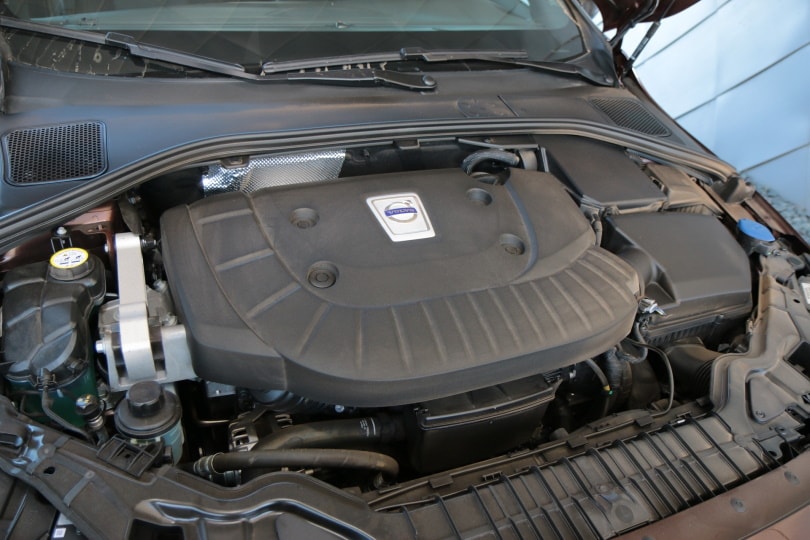
Where Are Diesel Engines Used?
- Cars – Diesel cars are not as common as petrol cars, even though they have lower emissions rates and, therefore, can enjoy some tax breaks. They have a reputation for being sluggish and noisy, although car manufacturers do get around this problem with the use of turbo diesel. Diesel cars are known to have longer lives, with some recorded as having driven more than 500,000 miles. Petrol cars are lucky to manage half this distance before they need scrapping or replacing.
- Locomotives – Diesel trains replaced steam locomotives and were popular because they required less manual work, did not need to stop as often to “refuel” and are considered low maintenance. The same long life that diesel cars benefit from is also enjoyed by diesel locomotives. Most modern trains use diesel electricity, which means that a diesel engine is used to power an electric motor.
- Marine Vehicles – Diesel engines are used in a lot of marine vessels and were originally used in submarines. The air compression ignition system is more reliable and requires less maintenance than the spark ignition in a petrol engine, and the long life of a diesel engine makes it a popular choice in vehicles where acceleration and performance are not necessarily as important.
- Agricultural Equipment – Diesel produces more torque than petrol and this means that a typical diesel engine is capable of pulling more load, making them beneficial for tractors and other agricultural vehicles and equipment.
- Generators – As well as being more efficient and longer lasting, diesel itself carries less risk of igniting, making it a safer choice for generators and backup generators.
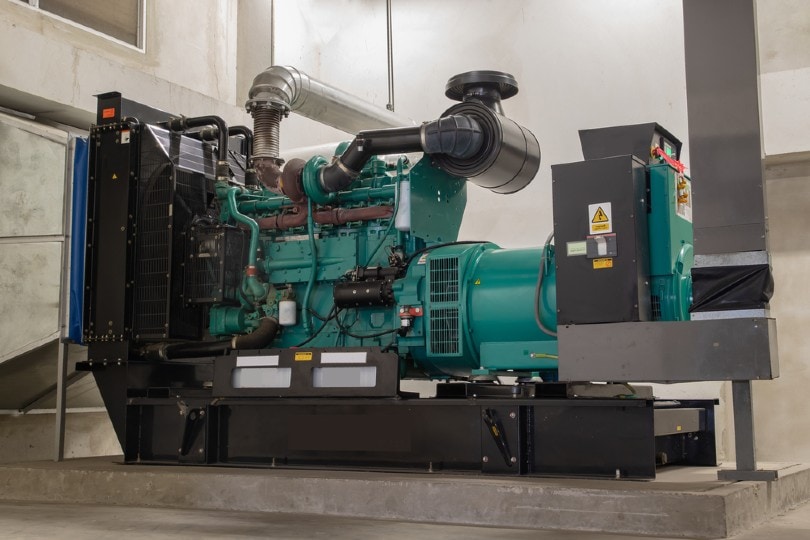
Advantages of Diesel Engines
Diesel engines are more fuel efficient than gas engines. Although it depends on several factors, diesel cars can get 30% more mileage than an equivalent petrol car.
As well as being 30% more efficient, diesel engines produce lower emissions. A modern diesel produces approximately 20% fewer emissions than a petrol car. Diesel engines also have more torque. This makes them a better choice for towing caravans and also for use in trains, trucks, and tractors.
They even have a longer lifespan. While petrol engine owners will struggle to get 200,000 miles out of their car before it reaches the end of its life, diesel owners can achieve 500,000 miles from their vehicles.
Disadvantages of Diesel Engines
Diesel tends to be more expensive per liter than petrol. However, the fuel improved fuel efficiency more than makes up for this difference. Although steps have been taken to reduce the noise, diesel engines still tend to be noisier than their petrol counterparts. Although diesel engines produce less carbon dioxide, they produce more nitrous oxide than petrol engines.
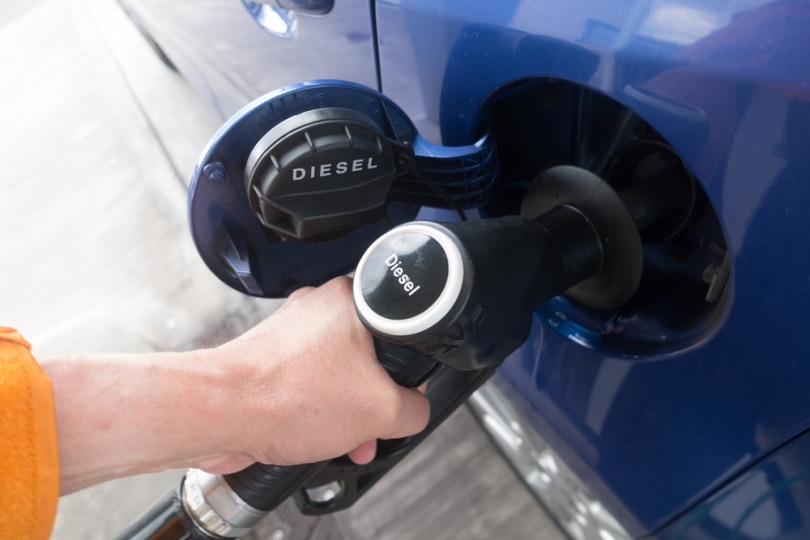
Frequently Asked Questions
How Does a Diesel Engine Ignite Fuel?
Diesel engines don’t have spark plugs and don’t rely on sparks to ignite the fuel. Instead, the air is highly compressed, and the increased temperature of the compressed air is enough to ignite the fuel.
Why Do Diesel Engines Last So Long?
The primary reason that diesel engines last longer is because of the diesel itself. Diesel is a distillate fuel, and it causes less wear on pistons and engine parts than standard gasoline does.
Can a Car Jump Start a Diesel Truck?
Diesels have two batteries, but they are parallel batteries, which means that jumping one battery will charge the other. It is definitely possible to jump-start a diesel using a gasoline-powered car.
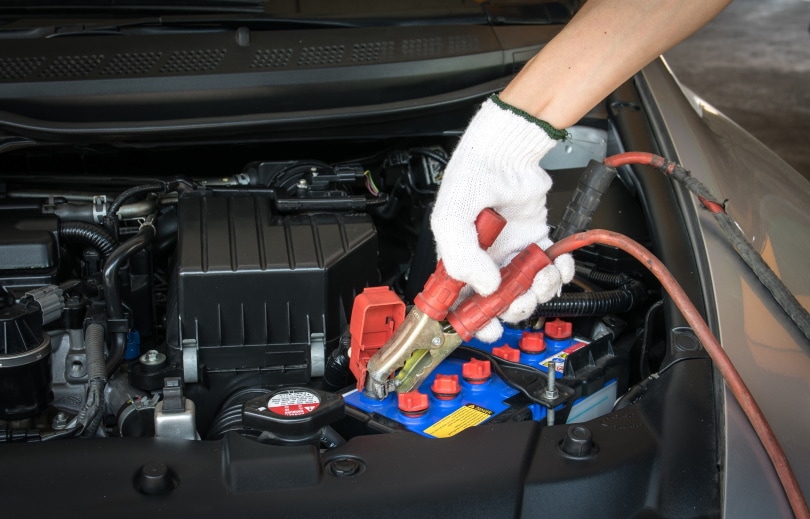
Why Do Diesels Have 2 Batteries?
While most petrol cars have one battery, diesels have two. This is essential because the engine needs more power to start and run, and this is achieved by having two batteries running in parallel.
At What Temperature Will a Diesel Engine Not Start?
When diesel reaches a certain temperature, it can start to crystallize. This is commonly called gelling and when diesel gels, it can prevent the engine from starting. While most modern engines are capable of starting in cold weather, temperatures below 40°F can make it difficult to start the engine, especially if it doesn’t have a warming coil.
In Conclusion
Diesel engines work differently from gasoline engines. Rather than igniting fuel using a spark, diesel engines compress air so that its temperature is high enough to ignite the diesel and start the pistons.
There are benefits and drawbacks to this type of engine.
Diesel is more fuel efficient, and the engine will last longer, but diesel engines have lower performance and can be noisier when running. Diesel engines are most commonly used in large vehicles because their increased torque means they are capable of efficiently pulling large loads. They are also used in generators because diesel is less likely to ignite and cause a fire, compared to other types of fuel.
- https://www.ezoil.com/resources-diesel-diesel-engine-basics
- https://afdc.energy.gov/vehicles/how-do-diesel-cars-work
- https://www.explainthatstuff.com/diesel-engines.html
- https://www.howacarworks.com/basics/how-a-diesel-engine-works
- https://www.rias.co.uk/news-and-guides/living-and-lifestyle/diesel-vs-petrol-the-pros-and-cons/
- https://www.energy.gov/eere/vehicles/articles/internal-combustion-engine-basics
- https://www.generatorsource.com/industrial_industry_usage.aspx
- https://www.centraldieselinc.com/blog/where-diesel-engines-used/
- https://www.centraldieselinc.com/capabilities/diesel-turbocharger-assemblies/
- https://stpdiesel.com/diesel-truck-engines-types-and-history/
- https://www.rymax-lubricants.com/updates/what-is-the-difference-between-a-2-stroke-and-a-4-stroke-motorcycle-engine/
- https://uk.boats.com/how-to/marine-diesel-engines/
- https://www.rias.co.uk/news-and-guides/living-and-lifestyle/diesel-vs-petrol-the-pros-and-cons/
Featured Image Credit: Maksim Safaniuk, Shutterstock
Contents


